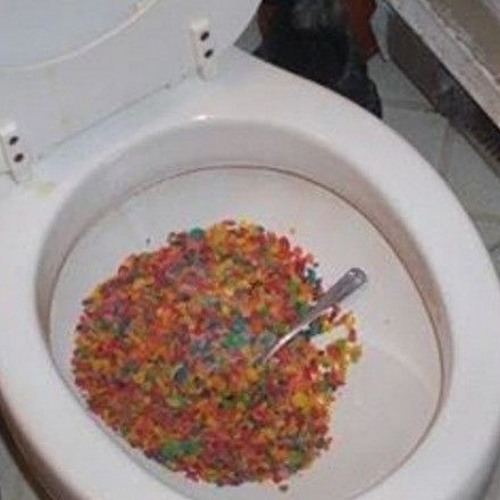Right here on the next paragraphs yow will discover a lot of great facts regarding Flushing Food Down the Toilet?.

Intro
Lots of people are usually faced with the dilemma of what to do with food waste, especially when it concerns leftovers or scraps. One typical question that emerges is whether it's fine to purge food down the commode. In this short article, we'll explore the reasons that individuals could think about purging food, the consequences of doing so, and different techniques for proper disposal.
Reasons people might consider flushing food
Lack of awareness
Some individuals may not recognize the potential harm triggered by purging food down the commode. They might erroneously believe that it's a safe method.
Benefit
Purging food down the bathroom might seem like a quick and very easy remedy to taking care of undesirable scraps, specifically when there's no nearby trash bin offered.
Laziness
In some cases, individuals may just choose to flush food out of large idleness, without taking into consideration the effects of their activities.
Effects of flushing food down the toilet
Environmental effect
Food waste that ends up in rivers can add to pollution and injury marine environments. Furthermore, the water used to flush food can stress water sources.
Pipes concerns
Flushing food can result in stopped up pipelines and drains, creating costly plumbing fixings and inconveniences.
Types of food that should not be purged
Fibrous foods
Foods with coarse structures such as celery or corn husks can obtain tangled in pipelines and trigger blockages.
Starchy foods
Starchy foods like pasta and rice can absorb water and swell, leading to blockages in pipelines.
Oils and fats
Greasy foods like bacon or food preparation oils should never ever be flushed down the toilet as they can solidify and create obstructions.
Correct disposal techniques for food waste
Utilizing a waste disposal unit
For homes outfitted with garbage disposals, food scraps can be ground up and purged through the pipes system. However, not all foods are suitable for disposal in this way.
Recycling
Particular food packaging products can be reused, minimizing waste and minimizing environmental impact.
Composting
Composting is an eco-friendly means to deal with food waste. Organic materials can be composted and used to enrich dirt for gardening.
The relevance of proper waste management
Lowering environmental harm
Proper waste monitoring techniques, such as composting and recycling, assistance minimize contamination and preserve natural resources for future generations.
Securing pipes systems
By staying clear of the practice of flushing food down the toilet, property owners can stop expensive pipes repair services and preserve the honesty of their plumbing systems.
Final thought
To conclude, while it may be tempting to flush food down the commode for ease, it is essential to comprehend the potential effects of this action. By adopting appropriate waste management methods and throwing away food waste sensibly, people can add to much healthier pipes systems and a cleaner atmosphere for all.
FLUSH FOOD DOWN THE TOILET?
FLUSHING FOOD CAN CAUSE BLOCKED DRAINS IN YOUR HOME
All of the plumbing fixtures in your home are connected to the same sewer pipe outside of your home. This outdoor sewer pipe is responsible for transporting all the wastewater from your home to the Council sewer mains. Even small pieces of food that go down the kitchen sink can cause problems for your sewer. It should therefore be obvious that flushing larger bits of food, such as meat, risks a clog in either the toilet itself or the sewer pipes. Flushing greasy food is even more problematic because oil coagulates when it cools, coating the interior lining of your pipes.
THE TOILET IS NOT A BIN
Food isn’t the only thing that people shouldn’t be flushing down the toilet. People use the toilet to dispose of all kinds of things such as tampons, makeup wipes, dental floss, kitty litter and even underwear. Water goes to great lengths to educate residents about the high costs and stress placed on wastewater treatment systems simply from people flushing the wrong stuff down the toilet. It costs taxpayers millions of dollars each year, and homeowners thousands in blocked drain repairs.
FLUSHING FOOD IS A WASTE OF WATER
Flushing food is a waste of our most precious resource - water. In June this year Level 1 water restrictions were introduced to protect water supply from drought conditions. Much of New South Wales continues to be affected by prolonged drought with recent figures revealing up to 97 per cent of the state remains in drought. Depending on whether you have a single or dual flush toilet, every single flush uses between five and 11 litres of water. In the current climate this is a huge amount of water to be wasting on flushing food that should be placed in the bin (or better yet, the compost).
https://www.jabplumbingsolutions.com.au/blog/can-you-flush-food-down-the-toilet

We had been guided to that editorial on Flushing Food Down the Toilet? from an associate on a different web address. Enjoyed our piece? Please share it. Help other people discover it. Thanks so much for taking the time to read it.
Set Up An Appointment